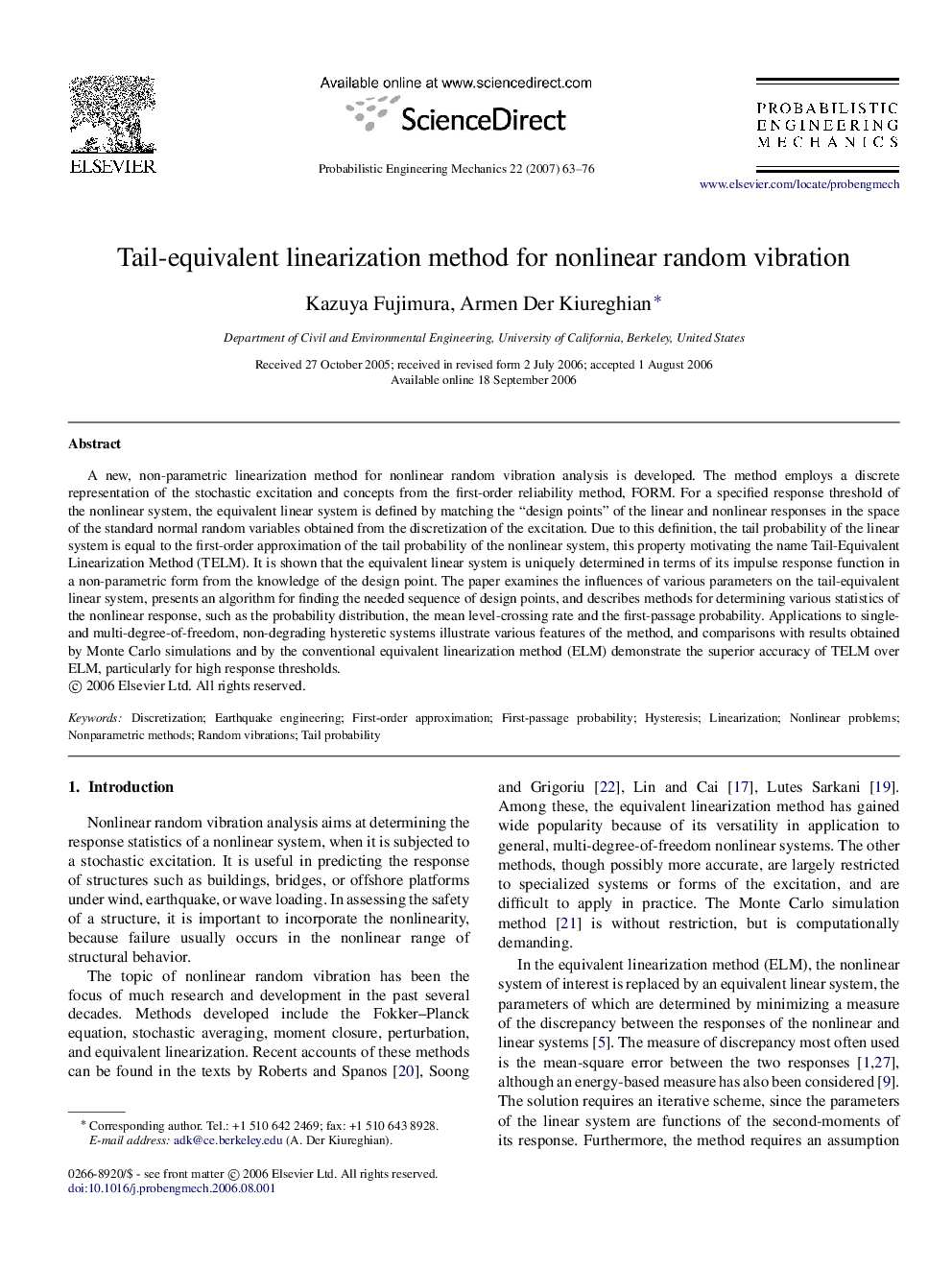| کد مقاله | کد نشریه | سال انتشار | مقاله انگلیسی | نسخه تمام متن |
|---|---|---|---|---|
| 805446 | 905144 | 2007 | 14 صفحه PDF | دانلود رایگان |

A new, non-parametric linearization method for nonlinear random vibration analysis is developed. The method employs a discrete representation of the stochastic excitation and concepts from the first-order reliability method, FORM. For a specified response threshold of the nonlinear system, the equivalent linear system is defined by matching the “design points” of the linear and nonlinear responses in the space of the standard normal random variables obtained from the discretization of the excitation. Due to this definition, the tail probability of the linear system is equal to the first-order approximation of the tail probability of the nonlinear system, this property motivating the name Tail-Equivalent Linearization Method (TELM). It is shown that the equivalent linear system is uniquely determined in terms of its impulse response function in a non-parametric form from the knowledge of the design point. The paper examines the influences of various parameters on the tail-equivalent linear system, presents an algorithm for finding the needed sequence of design points, and describes methods for determining various statistics of the nonlinear response, such as the probability distribution, the mean level-crossing rate and the first-passage probability. Applications to single- and multi-degree-of-freedom, non-degrading hysteretic systems illustrate various features of the method, and comparisons with results obtained by Monte Carlo simulations and by the conventional equivalent linearization method (ELM) demonstrate the superior accuracy of TELM over ELM, particularly for high response thresholds.
Journal: Probabilistic Engineering Mechanics - Volume 22, Issue 1, January 2007, Pages 63–76